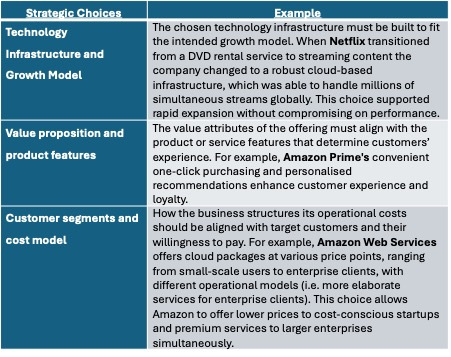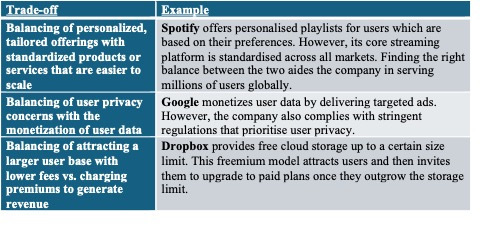innovation-matters.info
A community for innovators
Trade offs and Coherence in the Business Strategy for a Digital Innovation
Conceptualizing the Business Strategy for a Digital Innovation as a Set of Choices
In accord with Michael Porter and James Heppelmann's (2014) article who extend Porter's earlier work on competitive strategy into the realm of smart, connected products, the business strategy for a digital innovation remains focused on making choices to create and maintain competitive advantage.
Porter and Heppelman emphasize the importance of trade-offs in decision-making and the need for coherent, mutually reinforcing choices. Tables I) and II) provide examples for coherence and trade offs in the context of crafting the business strategy for a digital innovation.
Table I: Examples of coherent decisions in the context of crafting the business strategy for a digital innovation

Table II: Examples of trade-offs encountered in the context of crafting the business strategy for a digital innovation

Porter, M.E. and Heppelmann, J.E., 2014. How smart, connected products are transforming competition. Harvard business review, 92(11), pp.64-88.